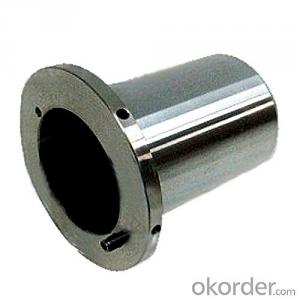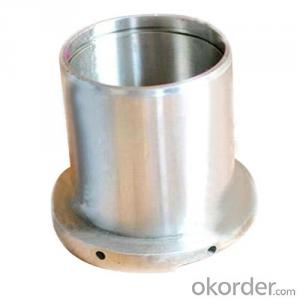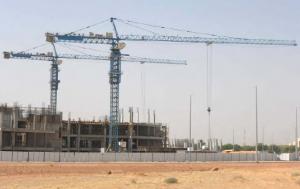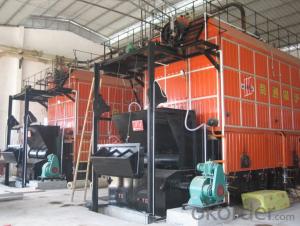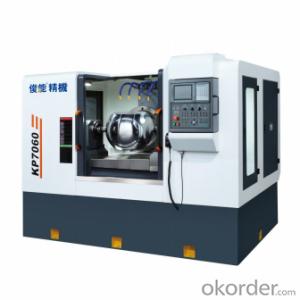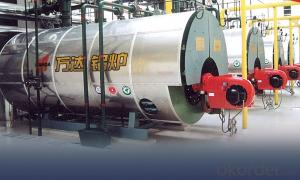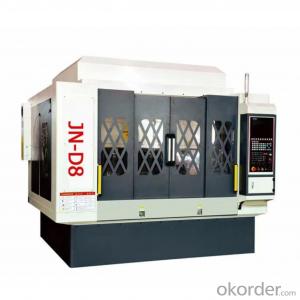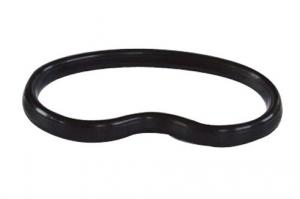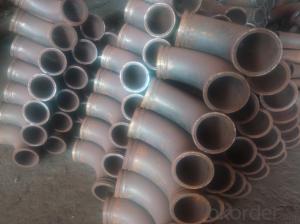Wear Sleeve Q90 Concrete Pump Parts High Quality
- Loading Port:
- Shanghai
- Payment Terms:
- TT OR LC
- Min Order Qty:
- 1 pc
- Supply Capability:
- 1000 pc/month
OKorder Service Pledge
OKorder Financial Service
You Might Also Like
Product information:
Wear Sleeve is the basic material among the frictional materials
They are widely used as the basic components for sealing
And the Wear Sleeve are widely adopted in petrochemical
industry due to its excellent performances such as wear ability, anti corrosion
Wear Sleeve is widely known for its durability and quality
It can withstand high pressure and is resistant to corrosion, so is used in water pumps, oil pumps and various other pumps
Today, Wear Sleeve has been playing an important role in the field of long working parts material
Salient features:
Special carbide grade developed for this application
Good cutting edge retention
Good functional lifespan
Applications:
Wear Sleeve is often used in concrete pumps.
Advantages of our products:
Made from 100% virgin raw material
Produced with advanced equipment
All products go through in-process and final inspection
Free technical service online
FAQ:
Q1: How long about delivery time?
A1: Normally we keep the raw materials for old customers and sometime we also keep stock products to make sure delivery time in any emergency cases.
Q2: How do we guarantee the quality of our pipes?
A2: We have established an advanced quality management system which conducts strict quality tests at every step, from raw materials to the final product. At the same time, we provide extensive follow-up service assurances as required.
Q3: How soon can we receive the product after purchase?
A3: Within three days of placing an order, we will book the vessel for goods. The specific shipping date is dependent upon international and government factors, but is typically 7 to 30 workdays.
Q4: If we can produce some pipes according to customers request?
A4: Yes, we can produce Concrete Placing Boom according to the difference country situations to make it suitable to the market and customers. We have very professional technical team to make the design.
Q5: How to make a quick resolution for after service?
A5: OKorder and our manufacture both have overseas branches all-around of world, If needed,
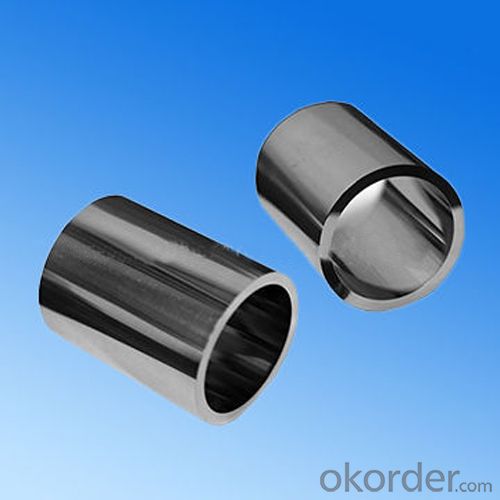

- Q:What is the function of a concrete pump hydraulic motor?
- The function of a concrete pump hydraulic motor is to provide the necessary power and force required to operate the concrete pump. The hydraulic motor is responsible for converting hydraulic energy into mechanical energy, which allows the pump to work efficiently and effectively. It drives the pumping mechanism, allowing the concrete to be pumped through the pipeline and delivered to the desired location. The hydraulic motor also controls the speed and direction of the pump, enabling precise placement of the concrete. Overall, the concrete pump hydraulic motor plays a crucial role in ensuring the smooth operation and successful delivery of concrete in construction projects.
- Q:Can a concrete pump wear plate be repaired or does it need to be replaced entirely?
- A concrete pump wear plate can be repaired in some cases, but it depends on the extent of the damage. If the wear plate has minor cracks or small areas of wear, it can often be repaired by welding or patching. However, if the damage is extensive or if the wear plate is severely worn out, it may need to be replaced entirely to ensure the optimal performance and safety of the concrete pump.
- Q:Are there any specific tools or equipment required for the installation of concrete pump spare parts?
- Concrete pump spare parts installation requires specific tools and equipment. The necessary tools include wrenches and sockets for bolt and nut tightening, hydraulic jacks for lifting heavy parts, and a crane or hoist for positioning extremely heavy components. To ensure secure installation, a torque wrench is used to tighten bolts to the correct torque specifications. Lubrication is achieved using a grease gun to apply grease to moving parts. Measuring tools like tapes or rulers are used for precise positioning and alignment. Safety goggles, gloves, and other protective gear should be worn during the installation process to prevent injuries. It is crucial to consult the manufacturer's instructions or seek professional assistance for proper installation, as the required tools and equipment may vary depending on the concrete pump's type and complexity.
- Q:Can I get spare parts for concrete pump hydraulic cylinders and valves?
- Yes, spare parts for concrete pump hydraulic cylinders and valves are generally available. It is recommended to contact the manufacturer or a reputable supplier to inquire about the specific parts you need for your concrete pump.
- Q:What are the different types of concrete pump pistons?
- In the construction industry, various concrete pump pistons are frequently utilized. These encompass the following: 1. Single-acting pistons: Smaller concrete pumps employ these pistons with a single working side. They propel the concrete out of the cylinder during the forward stroke and rely on gravity to retract the piston during the return stroke. 2. Double-acting pistons: Larger concrete pumps utilize these pistons with two working sides. They push the concrete out during the forward stroke and pull it back during the return stroke, thereby enhancing the pumping process's efficiency. 3. S-tube pistons: Trailer-mounted concrete pumps commonly employ these pistons, which are shaped like an S. They assist in regulating the concrete flow by directing it through a series of valves and pipes. 4. Rock valve pistons: These pistons are specifically designed for pumping concrete with larger aggregates. With their sturdy design, they can handle the more abrasive nature of such materials. 5. Gate valve pistons: These pistons employ a gate valve system to manage the concrete flow. They are frequently used in high-pressure applications and provide precise control over the pumped concrete's quantity. In summary, the selection of a concrete pump piston depends on various factors specific to the construction project, including the pump's size, the type of concrete being pumped, and the desired flow rate and pressure.
- Q:What are the indications of a faulty control lever?
- There are multiple indications that may suggest a malfunctioning control lever. Firstly, if the control lever does not respond or is sluggish when attempting to engage or disengage a specific function, it could be indicative of an issue. This may include difficulties in shifting gears, adjusting speed, or operating various controls such as the throttle or clutch. Another sign of a faulty control lever is if it becomes loose or unstable. If you observe excessive play or movement in the lever, it could imply that the mechanism connecting the lever to the control system is worn out or damaged. This can compromise the accuracy and precision of the control lever, making it challenging to effectively operate the intended functions. Furthermore, any unusual noises or vibrations originating from the control lever can serve as an indication of a fault. This might be a consequence of loose or broken components within the control lever assembly, suggesting the need for inspection and repair. Lastly, if the control lever becomes stuck or jammed in a particular position, it clearly signifies a faulty lever. This can hinder proper control of the equipment or vehicle, posing safety risks. In any case, if there is suspicion of a faulty control lever, it is crucial to have it inspected and repaired by a qualified technician to ensure proper functioning and safe operation.
- Q:Are there any specific guidelines for the storage and handling of concrete pump spare parts during transportation?
- Yes, there are specific guidelines for the storage and handling of concrete pump spare parts during transportation. These guidelines are in place to ensure the safe and efficient transportation of the spare parts, as well as to minimize the risk of damage or loss. Firstly, it is important to ensure that the spare parts are properly packaged and protected. This includes using appropriate packaging materials such as cardboard boxes, bubble wrap, or foam padding to prevent any physical damage during transit. The spare parts should be securely packed to prevent any movement or shifting during transportation. Additionally, it is recommended to label the packages clearly with the contents and any specific handling instructions. This will help the transport personnel to handle the spare parts correctly and avoid any mishandling or confusion. Furthermore, it is essential to choose a reliable and experienced transportation service provider who has expertise in handling delicate and sensitive items like concrete pump spare parts. They should have proper equipment, such as pallet jacks or forklifts, to handle and move the spare parts safely. During transportation, it is important to ensure that the spare parts are loaded and secured properly in the transport vehicle. This may involve using straps, ropes, or other securing devices to prevent any movement or shifting of the packages. In terms of temperature control, it is vital to consider the specific requirements of the spare parts. Some parts may be sensitive to extreme temperatures and require special handling or climate-controlled transportation. It is important to consult with the manufacturer or supplier of the spare parts to determine any specific temperature or climate requirements. Overall, following these guidelines will help ensure the safe and secure transportation of concrete pump spare parts, reducing the risk of damage or loss and ensuring their readiness for use when they reach their destination.
- Q:How often should hopper grate handles be inspected or replaced in a concrete pump?
- Hopper grate handles in a concrete pump should be inspected regularly for any signs of wear and tear or damage. The frequency of inspection and replacement may vary depending on the usage and condition of the equipment. It is recommended to inspect the hopper grate handles at least once a month or after every 500 hours of operation, whichever comes first. During the inspection, ensure that the handles are securely attached to the hopper grate and check for any cracks, bends, or other structural issues. If any damage is detected, it is advisable to replace the handles immediately to prevent any accidents or further damage to the equipment. It is also important to follow the manufacturer's guidelines and recommendations for maintenance and replacement of hopper grate handles. By regularly inspecting and replacing the handles as needed, you can ensure the safe and efficient operation of the concrete pump.
- Q:How can a faulty pressure gauge affect the concrete pumping process?
- The concrete pumping process can be significantly affected by a faulty pressure gauge in various ways. To begin with, inaccurate readings from the gauge can result in an incorrect evaluation of the pressure within the system. Consequently, this can lead to the application of excessively high or low pressure during pumping, which can cause a range of issues. If the faulty pressure gauge displays a higher pressure than the actual value, it can result in the over-pressurization of the concrete pump. This can lead to potential damage to the equipment, such as burst hoses or pipes, which poses a danger to nearby workers. Additionally, excessive pressure can cause the concrete to be pumped forcefully, potentially resulting in material splattering or leaking from the delivery system. This leads to wastage and an uneven distribution of the concrete. On the other hand, an incorrectly low pressure reading from the faulty gauge can also create problems. Insufficient pressure within the pumping system can prevent the concrete from being adequately delivered to the desired location. This can cause delays in the construction process and result in uneven or incomplete concrete placement, which affects the integrity and strength of the structure being built. Moreover, a faulty pressure gauge can contribute to the inaccurate monitoring of the concrete's slump or consistency. The pressure gauge is commonly used as an indicator of the concrete's flowability. If the gauge is faulty, it can provide misleading information about the material's workability. As a result, the concrete mix can be either too fluid or too stiff, leading to difficulties in pumping and potentially compromising the quality of the finished concrete structure. In conclusion, a faulty pressure gauge can have severe consequences on the concrete pumping process. It can cause over-pressurization, material wastage, uneven distribution, construction delays, and compromised concrete quality. Therefore, it is crucial to regularly inspect and maintain pressure gauges to ensure their accuracy and reliability. This promotes safe and efficient concrete pumping operations.
- Q:How can the concrete pump pipe be cleaned?
- Secure the cover at the end of the pipe so that the concrete does not hurt.
1. Manufacturer Overview |
|
|---|---|
| Location | |
| Year Established | |
| Annual Output Value | |
| Main Markets | |
| Company Certifications | |
2. Manufacturer Certificates |
|
|---|---|
| a) Certification Name | |
| Range | |
| Reference | |
| Validity Period | |
3. Manufacturer Capability |
|
|---|---|
| a)Trade Capacity | |
| Nearest Port | |
| Export Percentage | |
| No.of Employees in Trade Department | |
| Language Spoken: | |
| b)Factory Information | |
| Factory Size: | |
| No. of Production Lines | |
| Contract Manufacturing | |
| Product Price Range | |
Send your message to us
Wear Sleeve Q90 Concrete Pump Parts High Quality
- Loading Port:
- Shanghai
- Payment Terms:
- TT OR LC
- Min Order Qty:
- 1 pc
- Supply Capability:
- 1000 pc/month
OKorder Service Pledge
OKorder Financial Service
Similar products
New products
Hot products
Related keywords
